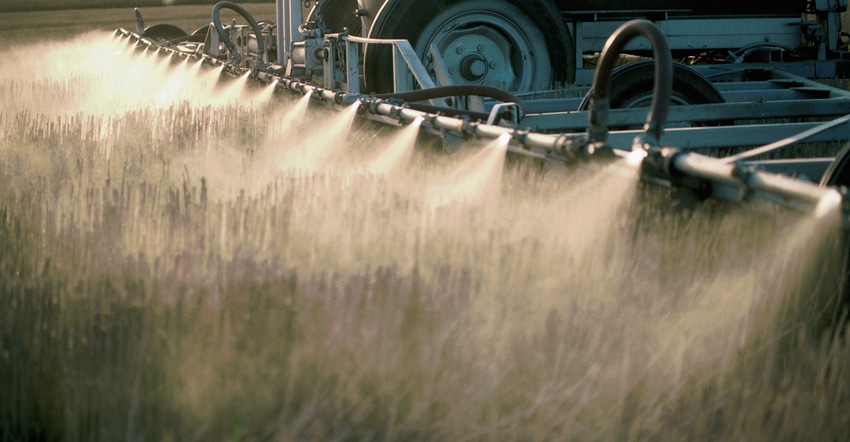May 18, 2022

It’s been very wet in some areas, while other areas desperately need rain.
In some cases, because of the initial lack of rainfall, soil-applied herbicides may not have been properly activated in certain earlier-planted fields. And with these recent deluges, there is concern about how it will affect herbicide performance.
How herbicides activate
All soil-applied herbicides require rainfall to mobilize them for effective weed control.
In general, rainfall should occur within seven to 10 days after application or before weed emergence. As a general rule of thumb, a half-inch of rain is considered the minimum — three-quarters to 1 inch of rain is ideal — depending on current soil moisture levels and the herbicide used.
Less mobile materials such as Prowl or Atrazine, and deeper germinating weeds, require more rainfall for effective mobilization and activation into the seed germination zone. Many small-seeded annual weeds can germinate with minimal moisture.
If 10-14 days have passed without rainfall following a pretreatment and weeds are starting to break, start planning for a post herbicide rescue application, or consider using a rotary hoe or that old cultivator that you have been thinking about trying again.
Some "reach back" or "recharge" can be expected on small annual weeds — especially broadleaves — with some herbicides when rainfall occurs, although depending on this may be a little like gambling.
In particular, the Group 27 herbicides such as Acuron, Balance, Corvus, Lexar and Lumax tend to have better reach back potential than some other herbicides, and escaped grass control is probably of greater concern.
The Group 5 herbicides — Photosystem II inhibitors — such atrazine, simazine and metribuzin, will also control small-emerged susceptible broadleaves via root uptake.
Effects of weather
In those areas with regionalized heavy rainfall and flooded fields, if residual herbicides were already applied and water (and soil) is moving off the field, some of the herbicide will likely be taken with it, or it will simply degrade and lose activity. However, each herbicide will be affected differently depending on its water solubility and soil adsorption characteristics.
Sandy or coarse soils with low organic matter have low cation exchange capacity (CEC), and thus will not absorb as much herbicide as those soils with more clay or silt and higher organic matter content, which have much higher CECs.
Furthermore, the less soluble the herbicide, the more moisture will be required to activate the product and to move it into the root zone. If the herbicide is highly water soluble, it can be mobilized with much less rainfall.
These same principles apply to excessive rainfall situations. Under heavy rainfall events — 4 inches or more — herbicide can leach out of the zone and down into the soil profile, which will negatively affect herbicide efficacy.
Low-solubility herbicides include atrazine, Balance Flexx, simazine, Prowl, Valor and Zidua. Medium- and high-solubility products include Callisto, s-metolachlor, acetochlor, metribuzin, Outlook, Pursuit, Reflex, Spartan/Authority and Stinger.
Prepare to scout
Since it can be difficult to determine if herbicides have leached or moved off sight, you should monitor those fields for lack of weed control or weed escapes over the next few weeks.
Post herbicide applications may be necessary for appropriate weed control. Also, if a field needs to be replanted to corn or another crop, remember to adhere to the crop rotation guidelines of the most restrictive herbicide that was applied.
Lingenfelter is an Extension weed science educator with Penn State Cooperative Extension.
You May Also Like




